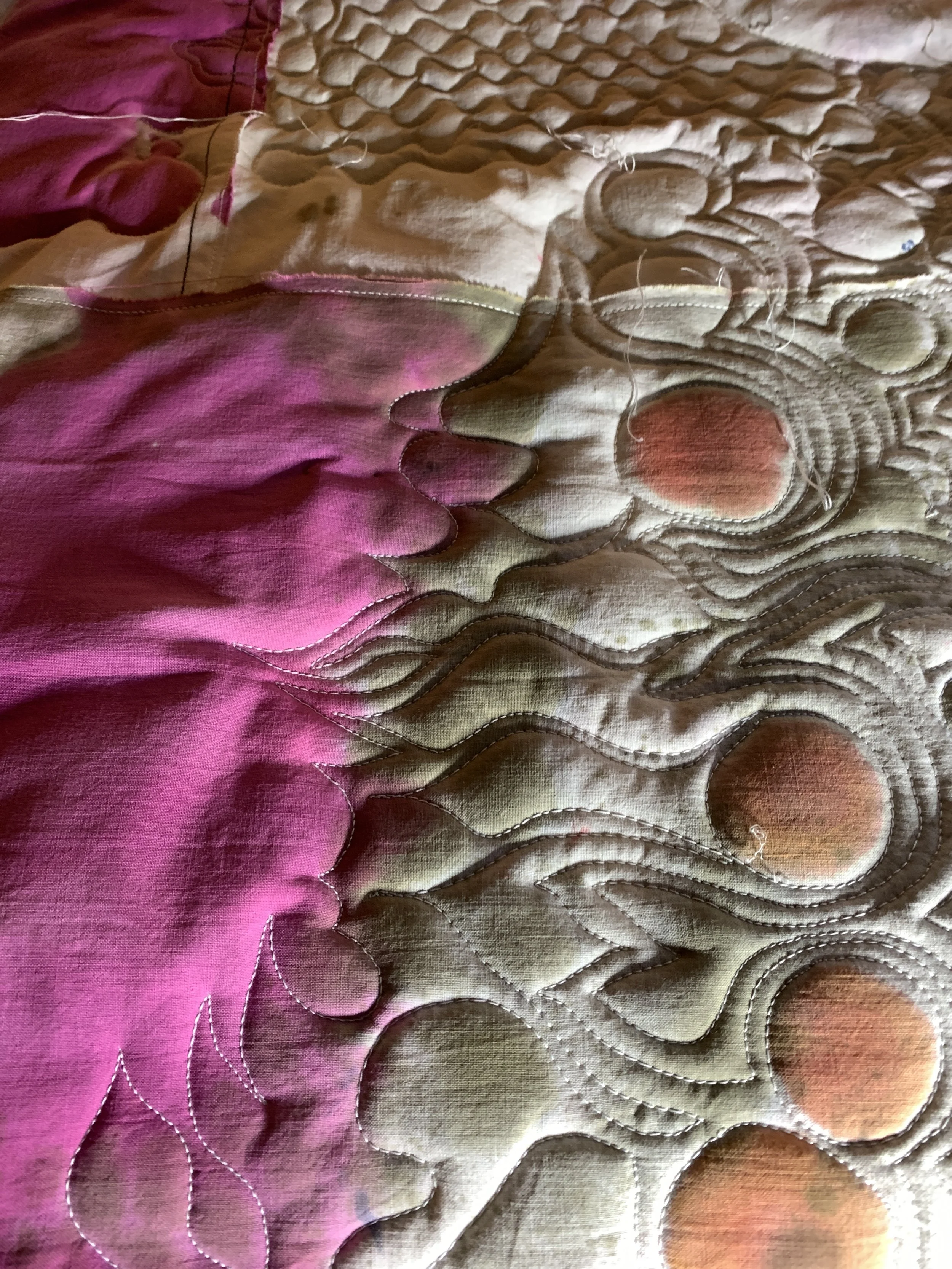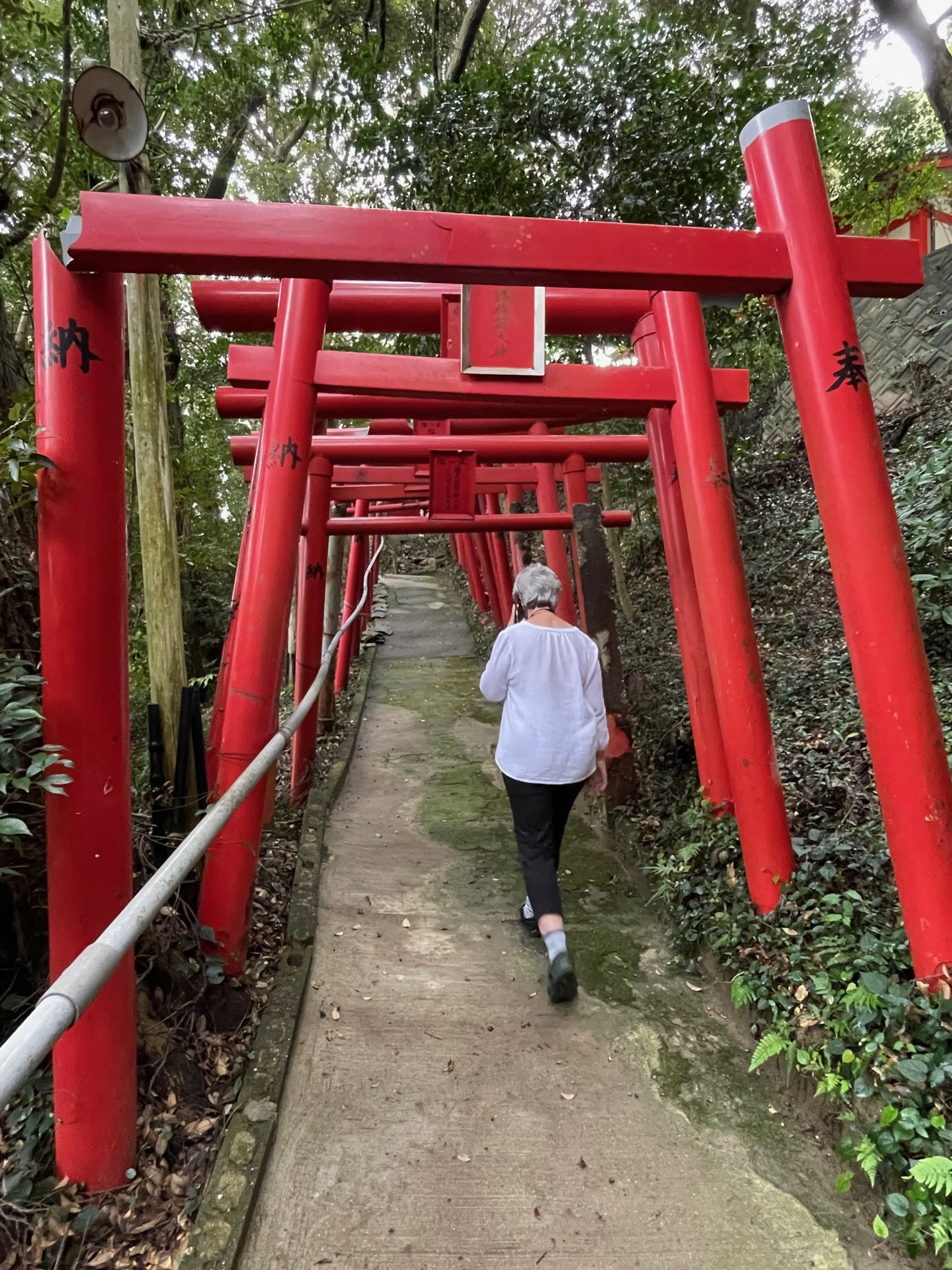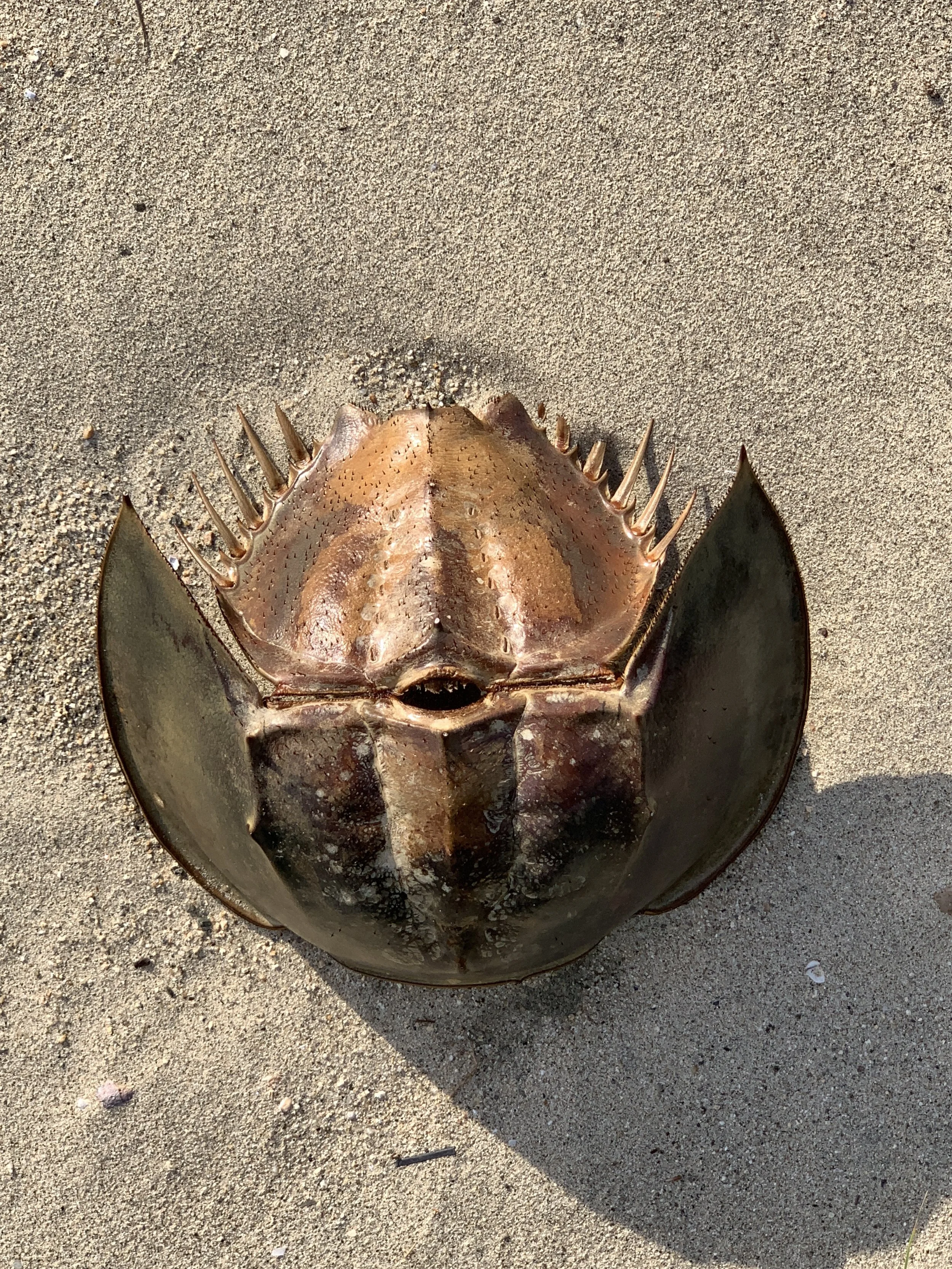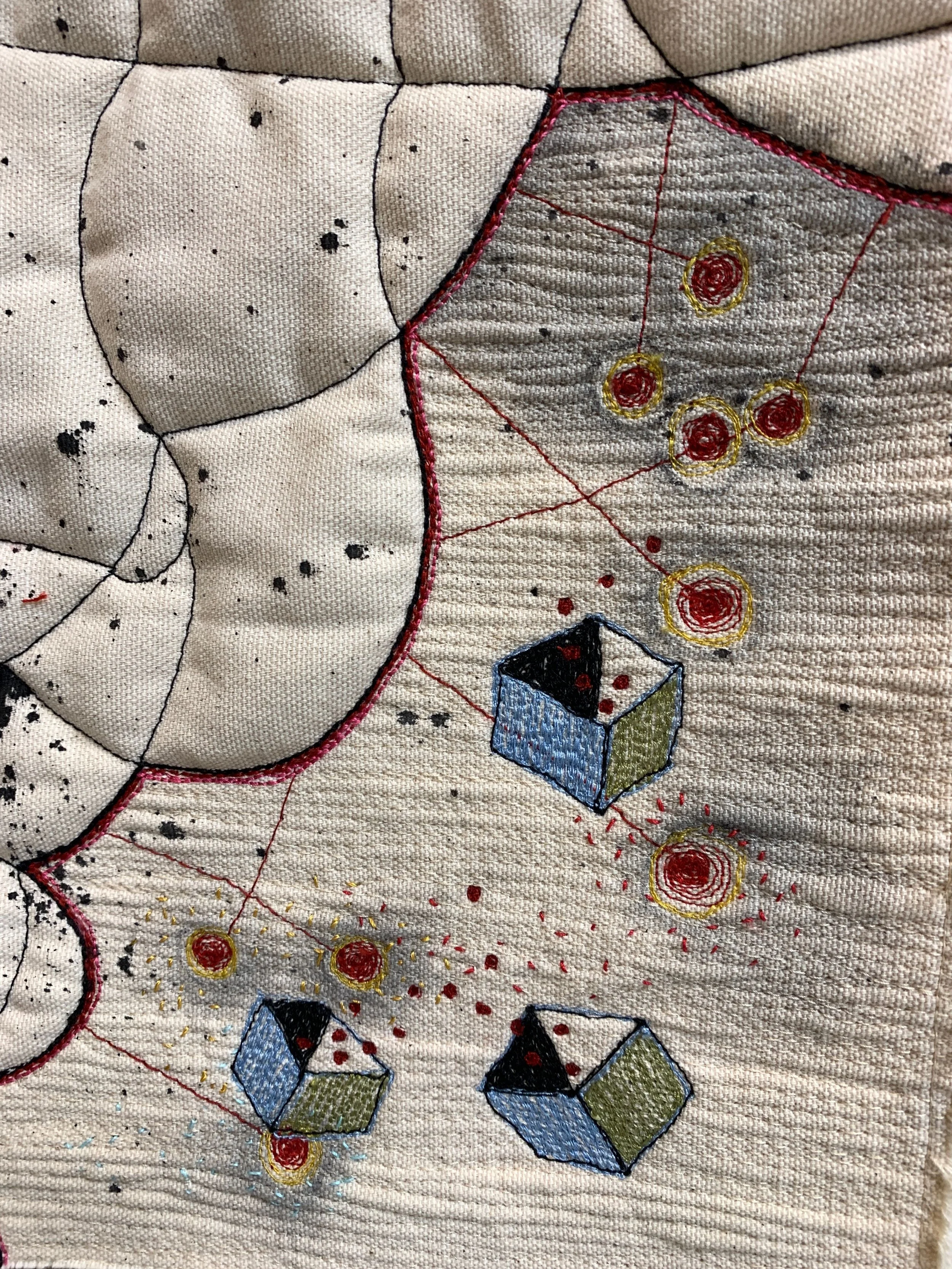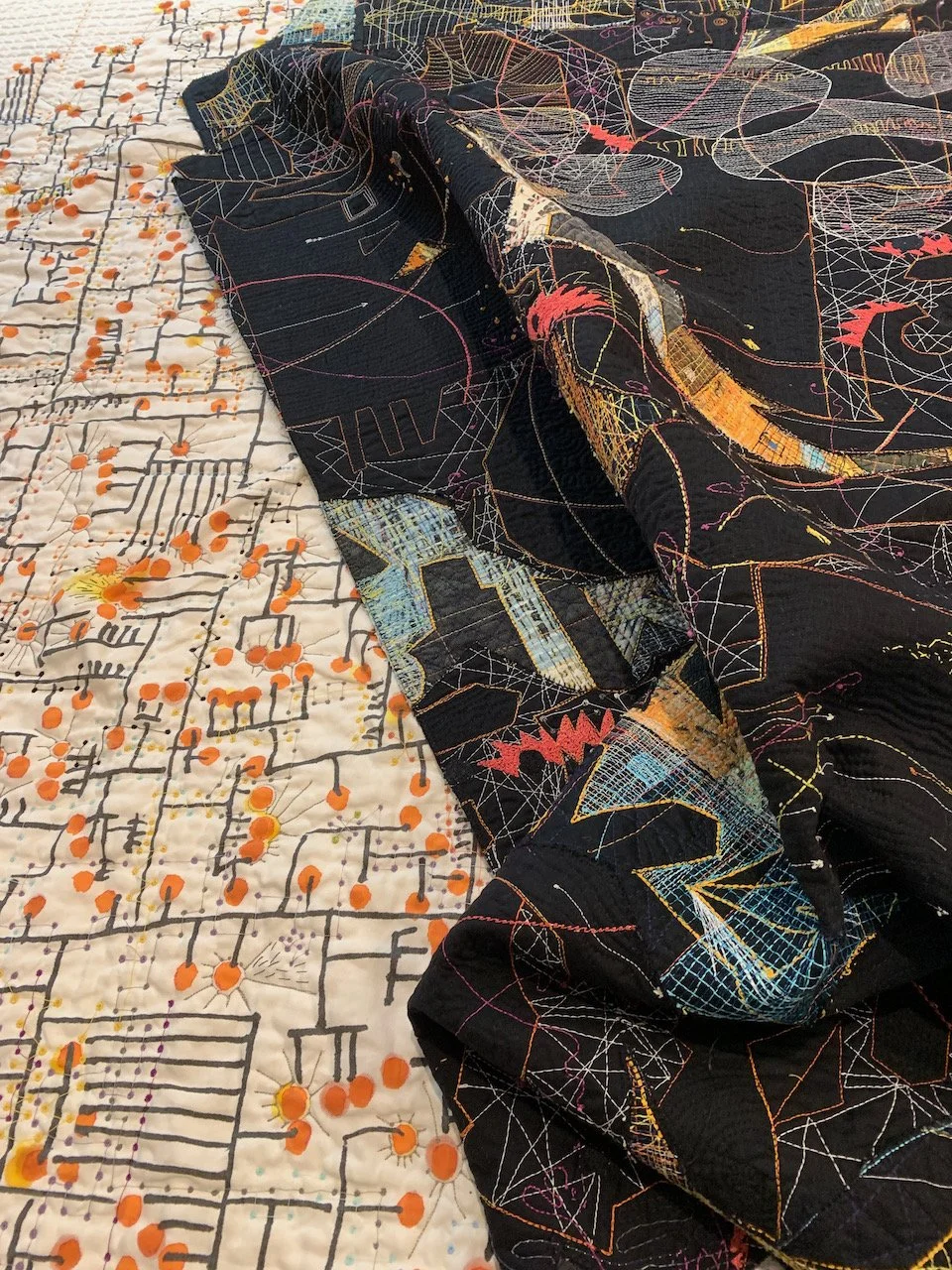I am pleased to be a part of Quilts 20/20 Traditional Works/Contemporary Art at the Susquehanna Art Museum. The museum is in Harrisburg, Pa. The show will run through August 31. If you are in the area, please stop by to see a great comparison of traditional historic works from the collection of LancasterHistory.org and the Pilgrim Roy collection and contemporary artists.
Pat Pauly has curated an extraordinary show.
My piece, Do the Doodle hangs in front of and is compared to an African American Crazy Patch quilt from the Pilgrim/Roy collection. That beautiful piece to the left on the yellow wall is by Kathleen Loomis, Crazed 8: Incarceration.





